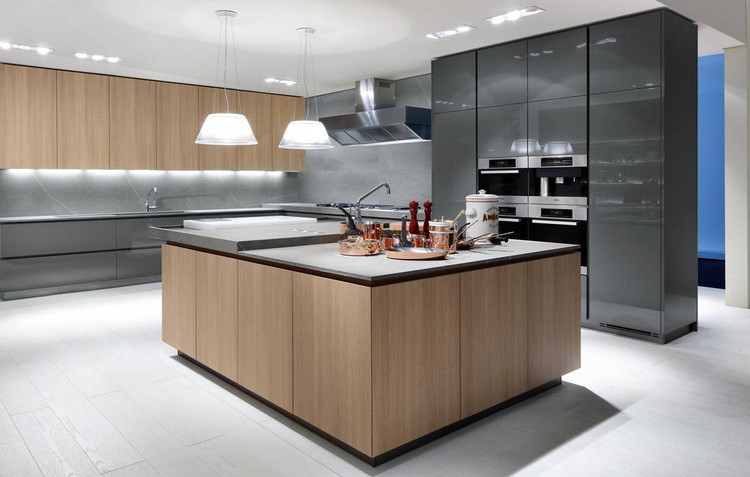Tips and Ideas Designing your kitchen Stylish Space
Your kitchen is often considered the heart of your home. It’s where you prepare meals, share conversations, and create memories. Designing your kitchen is a significant undertaking, and it’s essential to strike a balance between functionality and style. In this article, we’ll provide you with tips and ideas to help you design a kitchen that not only meets your practical needs but also reflects your personal taste.

Assess Your Needs and Space
The first step in designing your kitchen is to assess your needs and the available space. Here are some considerations to keep in mind:
1. Work Zones:
Divide your kitchen into work zones. Typically, there are three primary work zones: cooking, food preparation, and cleanup. Organize your kitchen layout to streamline your workflow.
2. Storage:
Determine your storage requirements. Think about your cookware, utensils, appliances, and pantry items. Adequate storage is essential for a clutter-free kitchen.
3. Appliances:
Choose your kitchen appliances based on your cooking habits and available space. Consider energy-efficient options to save on utility bills.
4. Layout:
Select a kitchen layout that suits your space and needs. Common layouts include the U-shape, L-shape, galley, and island kitchen.
5. Lighting:
Plan for adequate lighting. Combine natural light with task and ambient lighting to create a well-lit and inviting kitchen.
6. Style and Theme:
Decide on the style and theme you want for your kitchen. Whether it’s modern, traditional, rustic, or minimalist, your style choice will guide your design decisions.
Choose Your Kitchen Cabinets
Kitchen cabinets are a significant element of kitchen design. They not only provide storage but also contribute to the overall aesthetics. Here are some cabinet options to consider:
1. Open Shelving:
Open shelves provide a trendy and airy feel to your kitchen. They’re perfect for displaying attractive dishware and decorative items.
2. Traditional Cabinets:
Traditional cabinets with solid doors offer a classic look and are great for concealing kitchen clutter.
3. Glass-Front Cabinets:
Glass-front cabinets are a beautiful way to showcase your finest glassware and dishes while adding a touch of elegance to your kitchen.
4. Custom Cabinets:
Custom cabinets allow you to personalize your kitchen to your exact requirements and style preferences.
5. Cabinet Colors:
Choose cabinet colors that complement your kitchen’s overall theme. Neutral colors like white, gray, and beige are timeless choices. However, bold colors can add personality and charm to your kitchen.
Countertop Selection
Your choice of countertops can significantly impact your kitchen’s functionality and style. Here are some popular countertop options:
1. Granite:
Granite countertops are known for their durability, unique patterns, and timeless appeal. They can withstand heat and are excellent for food preparation.
2. Quartz:
Quartz countertops are low-maintenance and come in a wide range of colors and patterns. They are resistant to stains and scratches.
3. Butcher Block:
Butcher block countertops add warmth to your kitchen and are great for cutting and food preparation. They require regular maintenance to keep them in top condition.
4. Concrete:
Concrete countertops provide an industrial and modern look. They are highly customizable in terms of color and finish.
5. Marble:
Marble countertops offer a luxurious and elegant look. However, they can be susceptible to staining, so proper care is essential.
6. Laminate:
Laminate countertops are an affordable and low-maintenance option. They come in various colors and patterns, allowing for versatility in design.
Flooring Choices
Selecting the right flooring for your kitchen is crucial as it needs to withstand heavy foot traffic and potential spills. Here are some flooring options to consider:
1. Hardwood:
Hardwood flooring adds warmth and character to your kitchen. It’s durable and can be refinished if it gets scratched or damaged.
2. Tile:
Tile flooring is a practical choice for kitchens. It comes in a variety of colors and patterns, making it easy to match your kitchen’s style.
3. Vinyl:
Vinyl flooring is a budget-friendly and low-maintenance option. It’s resistant to water and easy to clean.
4. Laminate:
Laminate flooring can mimic the look of hardwood or tile and is a cost-effective choice.
5. Natural Stone:
Natural stone flooring, such as slate or travertine, adds a luxurious touch to your kitchen. It’s durable but may require regular sealing.
Kitchen Island or Peninsula
A kitchen island or peninsula can serve as a focal point in your kitchen, provide extra counter space, and create a gathering place. Here’s what to consider:
1. Island vs. Peninsula:
An island is a standalone structure that allows access from all sides, while a peninsula is connected to the kitchen and often serves as a divider between the kitchen and an adjacent space.
2. Storage:
Incorporate storage solutions into your island or peninsula, such as drawers and cabinets, to maximize its functionality.
3. Seating:
If you plan to use your island or peninsula for dining or socializing, consider adding seating, such as bar stools or counter-height chairs.
4. Appliances:
You can integrate appliances like a sink, dishwasher, or wine cooler into your island or peninsula, depending on your needs and available space. Designing your kitchen.